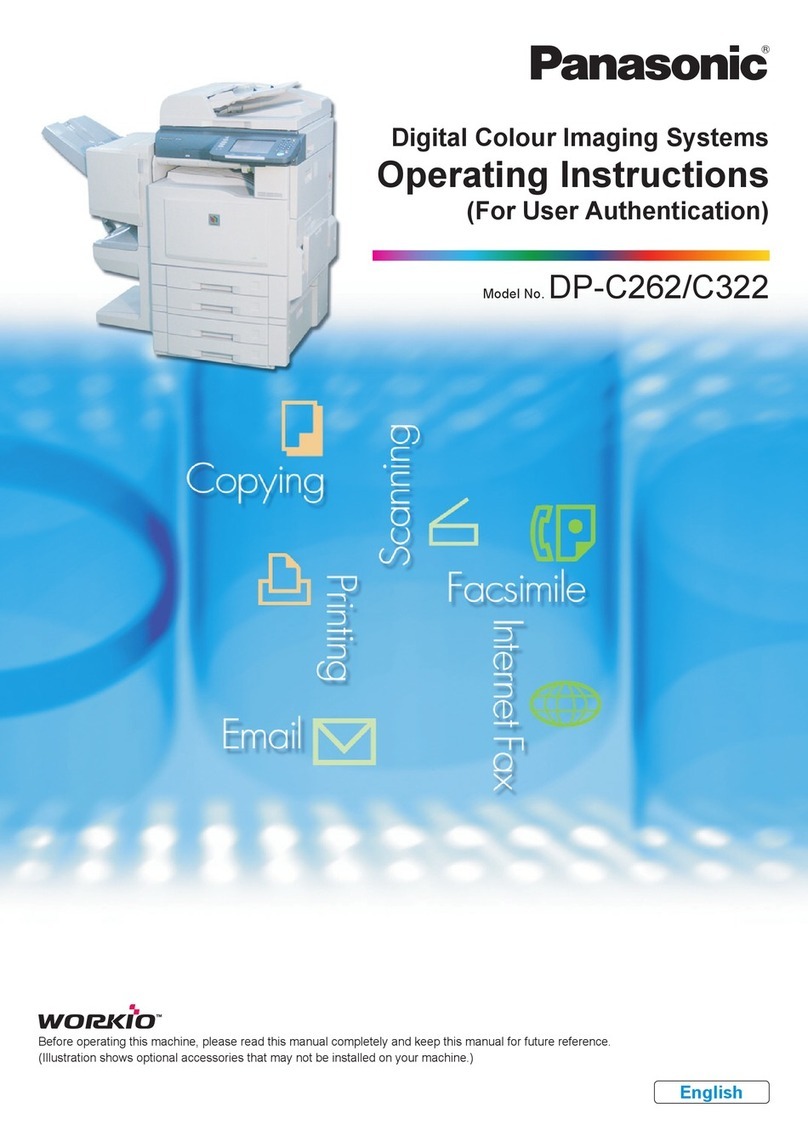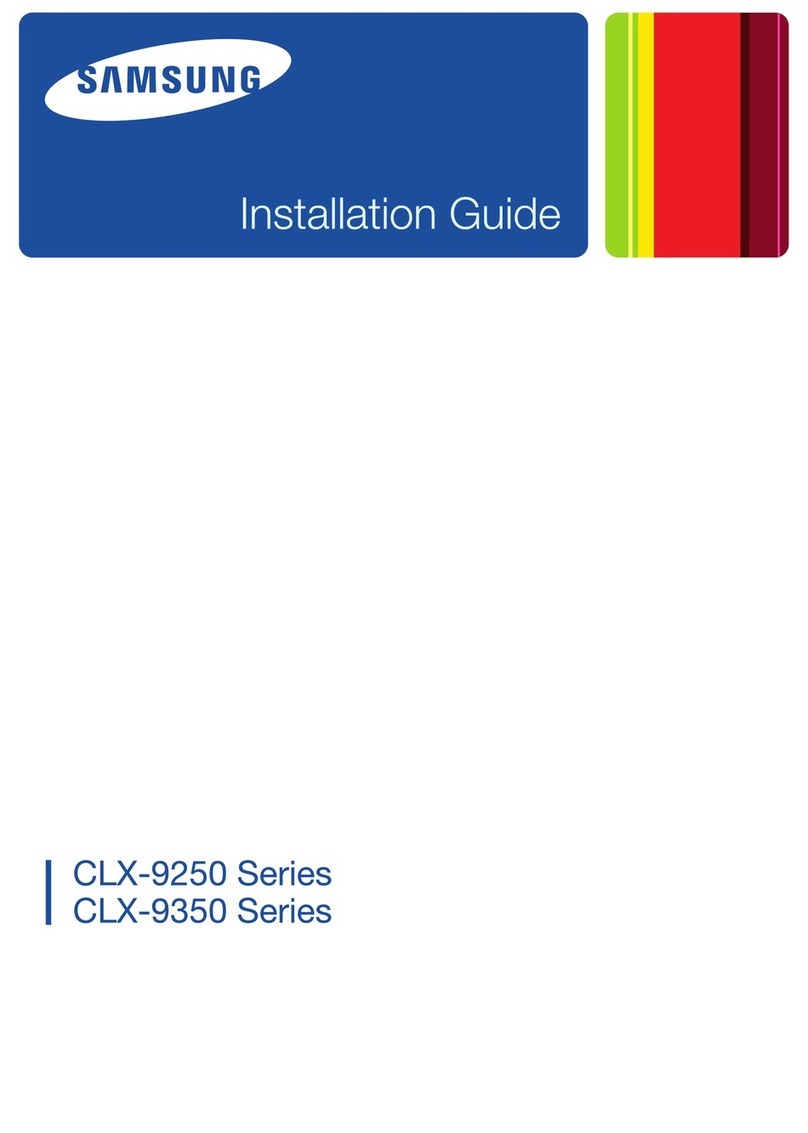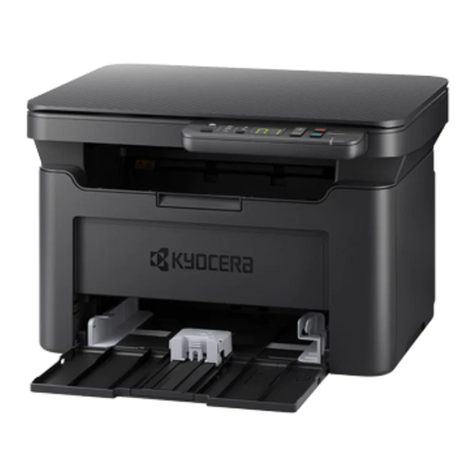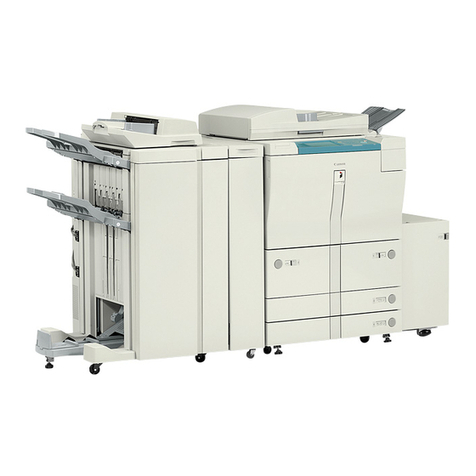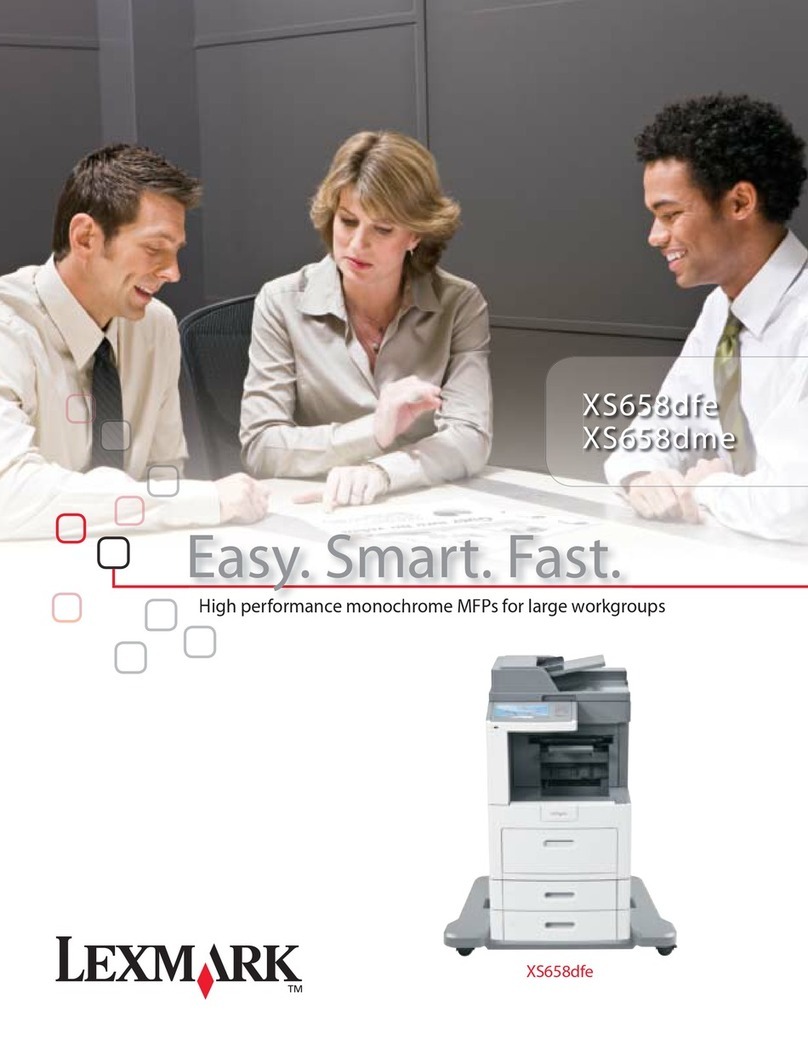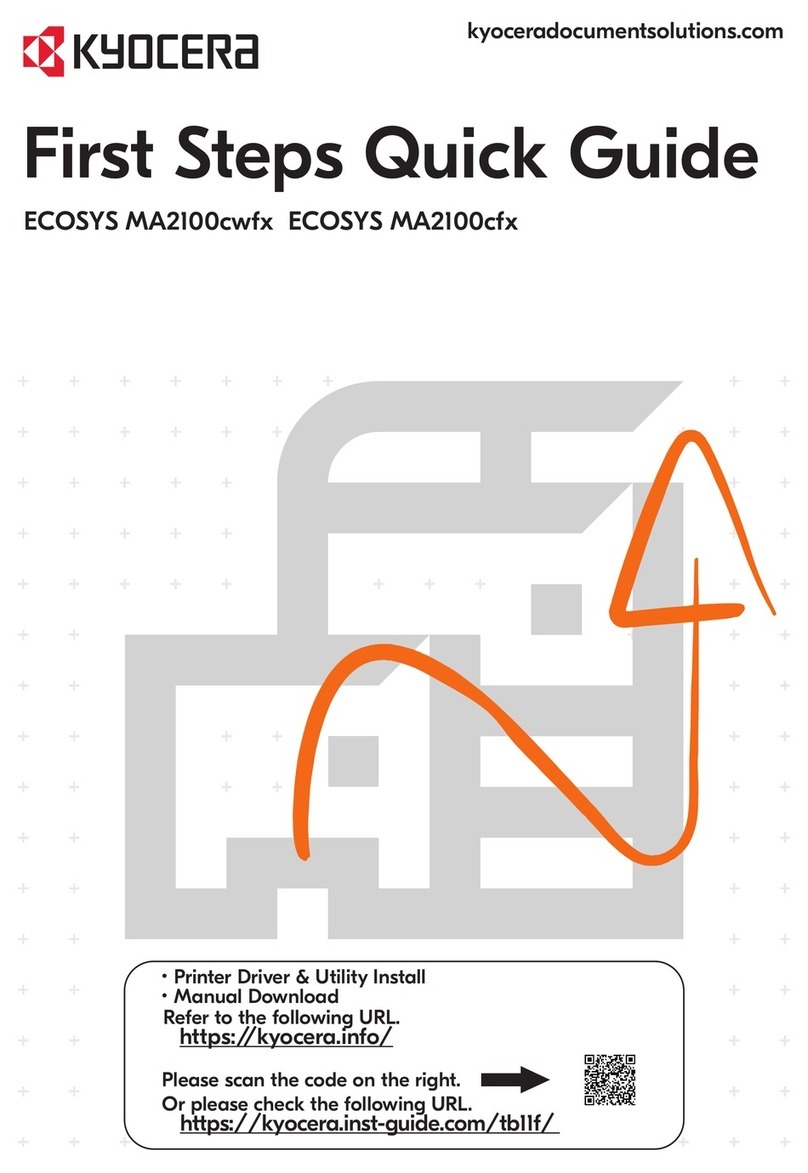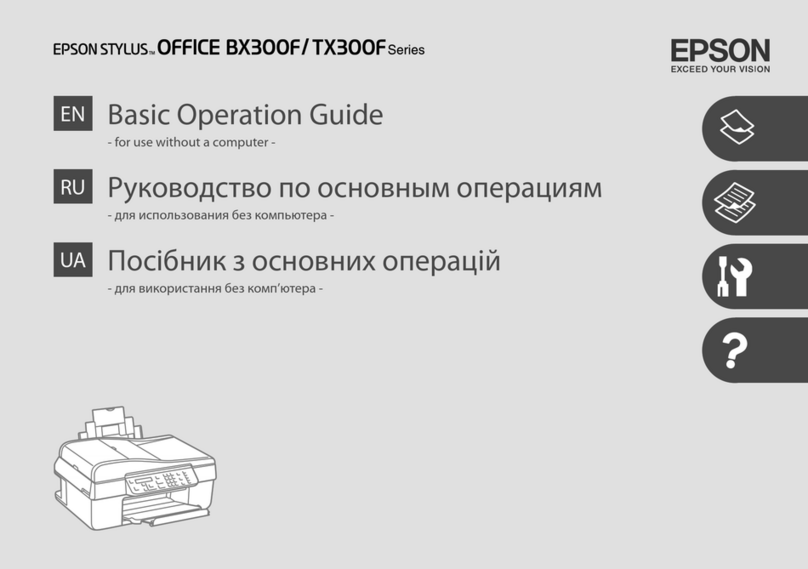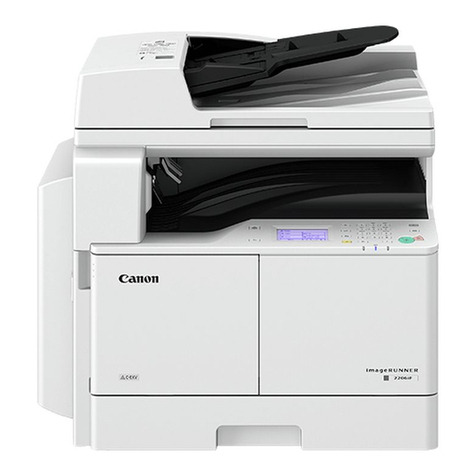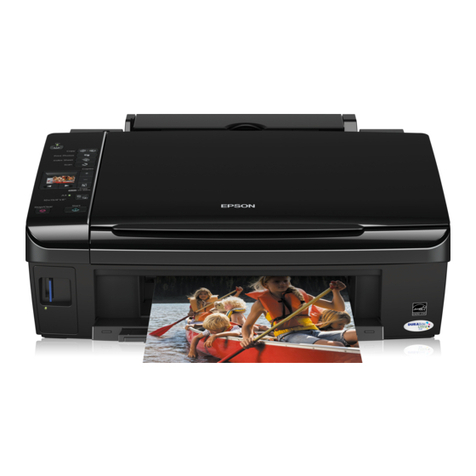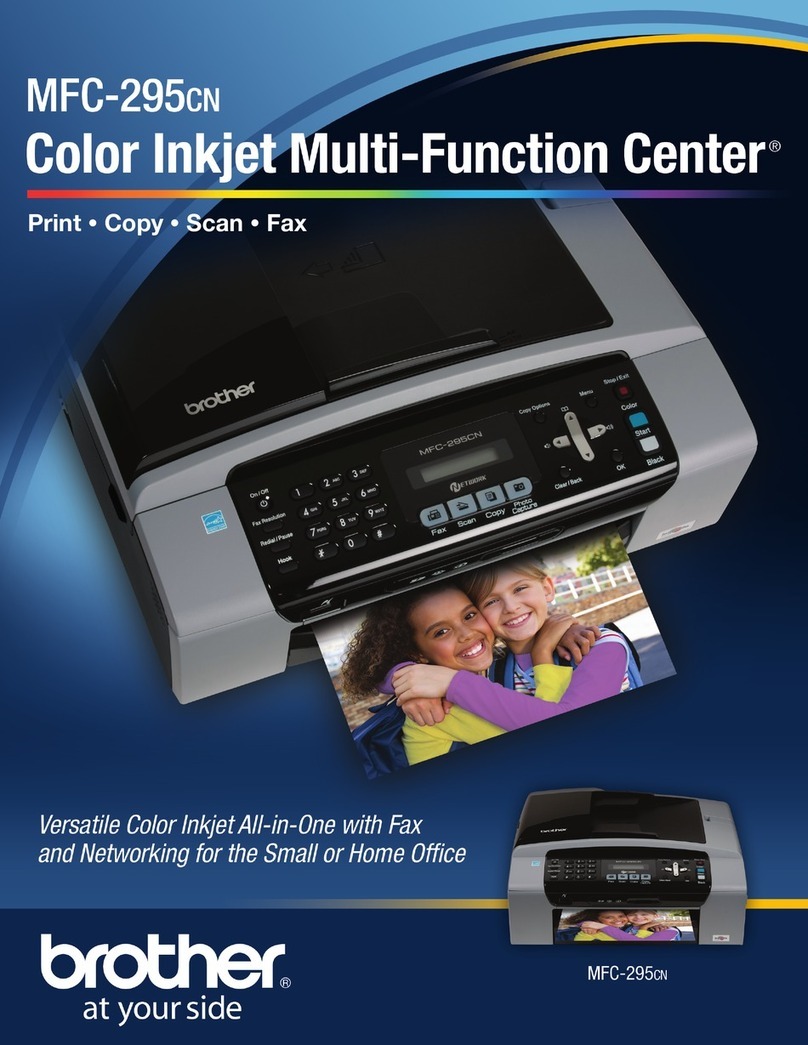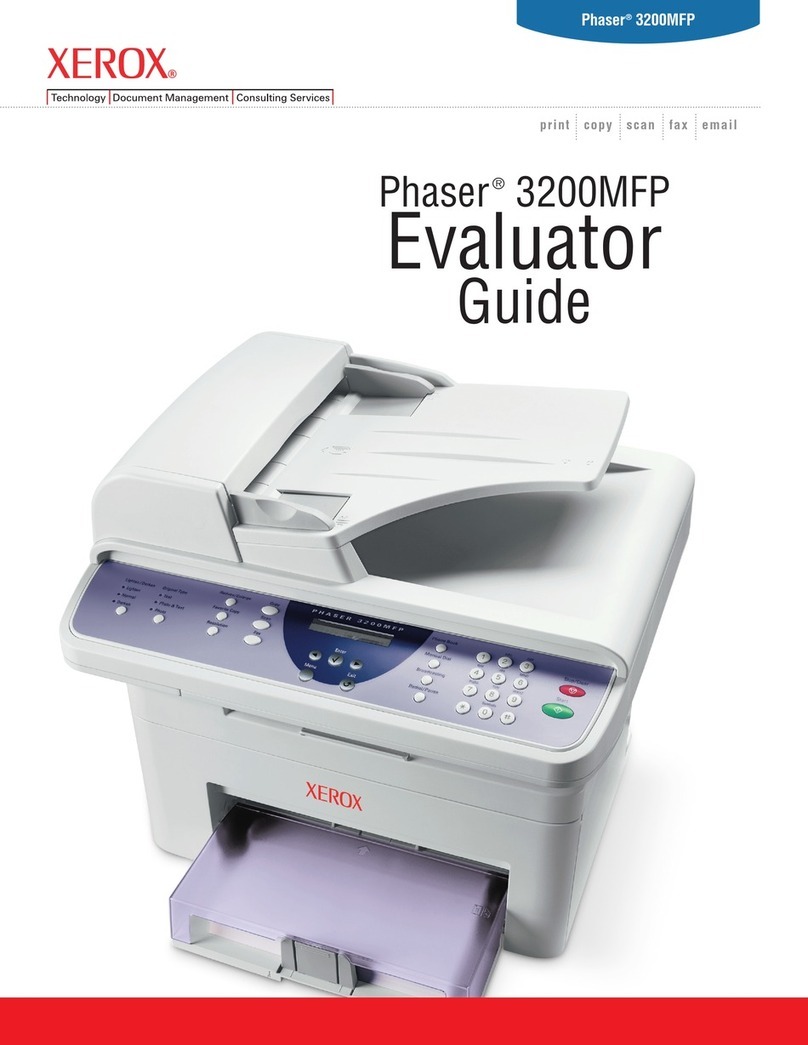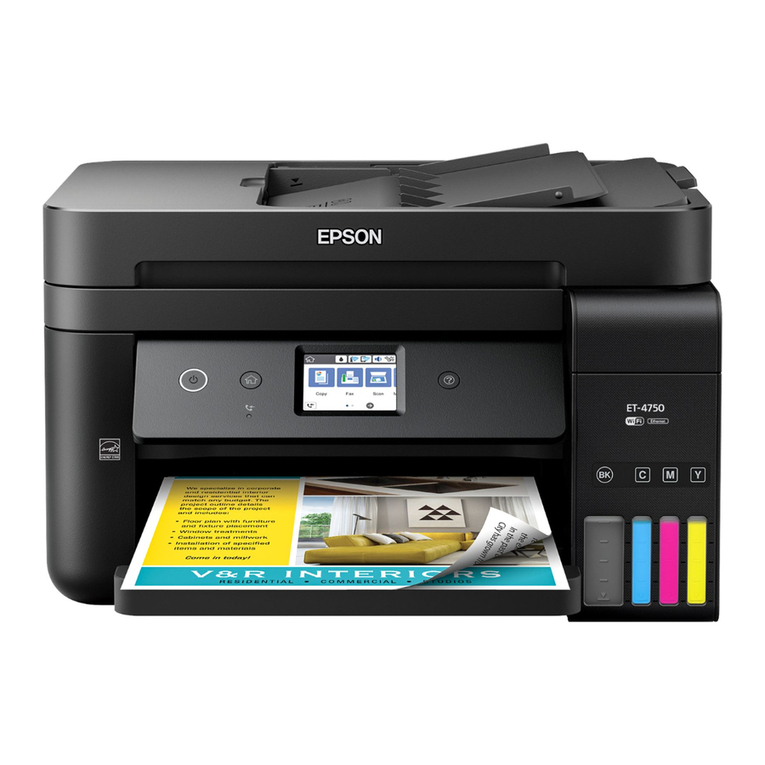Bones Milestone 312 Ace User manual

TD044-02
!
Milestone 312 Ace WiFi
Manual
www.bones.ch!
!
ENG

2
Congratulations on your purchase of the Milestone 312
Ace WiFi!
Your Milestone is a powerful, handy multifunction device and as versatile and reliable as a Swiss
Army knife. The most important feature of the Milestone is its accessibility. Because of the simple
user interface the device is easy to understand and operate, yet extremely powerful.
Milestone was developed specifically for the needs of blind and visually impaired users in their
professional and private lives. You as a user determine whether you want to use the device as a
tool with basic functions or as a professional tool with all software tools and hardware
enhancements. Whether you organize your daily schedule or simply want to just use it for
entertainment, Milestone can be adapted to your individual needs and is ideal as a daily
companion.
We ensure that our Milestone products are continually updated to include new, useful features
and hope that you will be able to fully appreciate the many functions of your Milestone 312 Ace
WiFi. Nick from Alameda in the United States tells us: "My Milestone is an absolute necessity for
staying organized and as an aid to memory. For me as a blind person, the device is simply
indispensable, whether I'm at home or on the road." This manual is provided as an EPUB file in
the internal memory of your Milestone 312 Ace WiFi and may be accessed at any time in the
application "Books". If you prefer the manual in another language or require an updated version,
please visit our website www.bones.ch.
Now we wish you lots of fun and success with Milestone.!

3
Table of contents
1 Product Overview 6
1.1 Applications of Milestone 312 Ace WiFi ............................................................................. 6
1.1.1 Basic functions 6
1.1.2 Software extras 6
1.1.3 Hardware extras (Add-Ons) 7
1.2 Delivery................................................................................................................................. 7
2 Milestone keys and connectors 7
2.1 Visual layout......................................................................................................................... 8
2.2 Layout description............................................................................................................... 8
2.2.1 The operating surface 8
2.2.2 Charging the battery 9
2.2.3 Connecting Headphones 9
2.2.4 USB connection to computer 9
2.2.5 External microphones and line-in 10
2.2.6 SD Memory Card 10
3 General operation 10
3.1 General Features ............................................................................................................... 10
3.1.1 Select main application 11
3.1.2 On and Off (Sleep Mode) 11
3.1.3 Lock keypad 11
3.1.4 Adjust the volume 11
3.1.5 Playback Speed 11
3.1.6 Menu 11
3.1.6.1 Information Service 12
3.1.6.2 Local Settings 13
3.1.6.3 Basic Settings 13
3.1.7 List of keyboard shortcuts - General Functions 13
3.2 Data management via computer ...................................................................................... 14
3.2.1 The Milestone drives during active computer connection 14
3.2.2 Create a folder structure with the computer 14
3.2.3 Save or delete files in the folder structure 14
3.2.3.1 Data transfer via computer 14
3.2.3.2 Delete via computer 15
4 Basic Applications 15
4.1 Audio .................................................................................................................................. 15
4.1.1 General functions of Audio 15
4.1.1.1 Folder navigation in Audio 15
4.1.1.2 Delete files and folders with Milestone 16

4
4.1.1.3 Setting up a shortcut to a folder 17
4.1.1.4 Naming folders via Voice Recording 17
4.1.1.5 Fast Jump 17
4.1.1.6 Set and delete audio bookmarks 18
4.1.2 Play music 18
4.1.3 Play Text 19
4.1.4 Recorder 20
4.1.4.1 Short Recording your voice 20
4.1.4.2 Continuously recording a voice memo 20
4.1.4.3 Location of a voice memo 20
4.1.4.4 Listening to a voice memo 21
4.1.4.5 Recordings via the internal microphone 21
4.1.4.6 Recordings from an external microphone or other line-in sources 21
4.1.5 List of keyboard shortcuts - Audio 22
4.2 Books ................................................................................................................................. 23
4.2.1 Play and pause a book 24
4.2.2 Navigate in a book 24
4.2.3 Select a book 26
4.2.4 Create and Delete a bookmark 26
4.2.5 List of keyboard shortcuts - Books 26
4.3 Alarm clock ........................................................................................................................ 27
4.3.1 Handling the alarm 27
4.3.2 Dismiss the alarm 28
4.3.3 Retrieving Time and Date 28
4.3.4 Time and date settings 28
4.3.5 List of keyboard shortcuts - Alarm Clock 28
5 WiFi functions 28
5.1 WiFi connection to the Internet ........................................................................................ 29
5.2 Online Libraries.................................................................................................................. 30
5.2.1 Configure access to a library 30
5.2.2 Enter Library 31
5.2.3 Place a book on loan 32
5.2.4 Download a book 32
5.2.5 Returning or Deleting a Book 32
5.2.6 The Electronic Kiosk 33
5.2.7 Switching between multiple libraries 33
5.3 Web radio ........................................................................................................................... 33
5.3.1 Finding web radio stations 34
5.3.1.1 Selection from station package 34
5.3.1.2 Selection by filtering from worldwide database 34

5
5.3.1.3 Selection via full-text search in worldwide database 35
5.3.1.4 Adding own links 35
5.3.2 Creating Favorites 35
5.3.3 Web radio function overview 36
5.3.4 First aid for internet connection and web radio 37
5.4 Weather .............................................................................................................................. 37
5.4.1 Weather Navigation 38
5.4.2 Weather Pro Options 39
5.5 Bluetooth............................................................................................................................ 39
5.5.1 First Aid for Bluetooth 40
5.5.2 Bluetooth professional function 41
6 Extra applications 41
6.1 Radio .................................................................................................................................. 41
6.1.1 Use Radio 41
6.1.2 Manual Frequency Input 42
6.1.3 Saving and naming a radio station 42
6.1.4 Record radio signal 42
6.1.5 List of keyboard shortcuts - Radio 42
6.2 Agenda ............................................................................................................................... 43
6.2.1 Current time and date query 43
6.2.2 Appointment creation and management 43
6.2.3 Appointment Preview and Save an Appointment 45
6.2.4 Deleting a Scheduled Record 45
6.2.5 Stopping an appointment reminder 46
6.2.6 Example of a date entry 46
6.2.7 List of keyboard shortcuts - Agenda 46
7 Further information 47
7.1 Technical specifications.................................................................................................... 47
7.2 Advice................................................................................................................................. 47
7.2.1 SD Memory Cards 47
7.2.1.1 For use with the Milestone we recommend media 47
7.2.1.2 Secure contents of a SD memory card 47
7.2.2 Configuration options for advanced users 47
7.2.3 Protect your Milestone 48
7.2.4 Backing Up Your Data 48
7.2.5 Nothing works anymore - Troubleshooting 48
7.3 Service and Support .......................................................................................................... 48
7.3.1 General information 48
7.3.2 Software Update 49
7.4 About Bones AG ................................................................................................................ 49

6
1 Product Overview
This chapter covers the main applications and the delivery of the device.
1.1 Applications of Milestone 312 Ace WiFi
Milestone 312 Ace WiFi (Milestone, in this manual) is a multifunctional device, which can be
customized according to your wishes. Even the basic version of your Milestone includes extensive
functionality. With optional applications such as radio and calendar this can be extended if
wished so.
1.1.1 Basic functions
The following list includes all applications that are standard features of the Milestone WiFi and are
included with the basic version.
application description
Audio Audio is an extensive application and allows you to play audio files at various
speeds. The storage and management of files is available in a fully accessible,
selectable folder structure. The following applications are available under the
Audio application:
Music Player: With its convenient playback of audio player is designed for
optimal music enjoyment.
You do not need any knowledge of the technical details of different file formats,
because your Milestone automatically understands and can play (MP3, AAC,
WMA, WAV and others).
Text-To-Speech Player: This function allows you to play text files in TXT and
DOC formats. The language and reading voice can be set as desired.
Recorder: The recorder creates crystal clear voice memos at your fingertips.
Even in noisy environments, such as in trains or planes. The powerful Milestone
speaker ensures clear playback. In addition to the built-in microphone you can
also use an external microphone to produce quality recordings in stereo.
Books Application Books lets you play smarter audiobooks, for example, in DAISY
format. Such audiobooks are equipped with a special structure, which offers
useful options for navigating within the book, such as chapter, phrase and Time
jump. You can also set bookmarks, adjust the reading speed, and more. With
the FM Transmitter function, you can even receive your audiobooks and listen
wirelessly through a car radio or home stereo system.
Alarm An easy -to-use alarm clock with all the necessary adjustment options, wake-
up signals and vibrating alert. The time and date can also be requested, as well
as countdown timer and stopwatch.
1.1.2 Software extras
With software extras you can enhance your M312Ace according to your requirements. The
following list provides a summary of these optional applications.

7
application Description
Radio The stereo FM radio features automatic tuning, a transmitter storage, direct
frequency input, radio recording and RDS (Rad io Data System).
Calendar Calendar is a useful tool to organize your daily schedule. Besides the typical
calendar functions, you can use the calendar and plan ahead special events,
such as a radio recording or voice recording at a certain time.
1.1.3 Hardware extras (Add-Ons)
In addition to the software tools there are hardware extras, so-called Add-Ons, with which you
can equip your Milestone to extend functionality even further. These enhancements have been
designed specifically for Milestone and fit perfectly with the design of the basic unit.
With the high-end color detection device "FaMe" you can identify the color of your clothes in the
closet and put together a matching outfit. Besides colors "FaMe" also recognizes light intensity
and even tells you if two colors are identical.
For more information go to www.bones.ch or contact your dealer.
1.2 Delivery
The following items come as standard with your Milestone 312 Ace:
" Milestone 312 Ace (main unit),
" USB 2.0 Hi-Speed cable,
" Charger,
" Lanyard,
" Case,
" SD memory card,
" Printed manual.
If any of these items are not included in your package, please contact your dealer.
2 Milestone keys and connectors
This chapter describes the buttons, connectors and other tactile areas.

8
2.1 Visual layout
2.2 Layout description
2.2.1 The operating surface
Holding your Milestone in your hand, you will find five buttons on the Front Face of the machine.
In the middle is a large key and four other buttons are arranged around it in the shape of a cross.
The middle button can be identified not only by its size and central location, but also by its
smooth surface. The name of this button is "Play". Now we look at the buttons surrounding the
"Play" button.
If you move your thumb down, you will feel the "Mode" button. The "Mode" button is the same
size as the "Play" button, but marked with a tactile X.
Below this you will feel the small, round holes of the speaker. Returning to the buttons, The other
three keys are slightly smaller.
Immediately to the left of the central "Play" button, you will feel the "Left arrow". You will
recognize it by the highlighted arrow pointing to the left.
If you move to the right of the "Play" button you will find the "Right arrow", also a tactile arrow but
pointing to the right.
The fifth and final key is located above the "Play" button. This is the "Rec" button and you will find
a small round indentation in the center.
The four buttons, which are arranged around the "play" button, are often used in the style of a
navigation cross. With the "Left arrow" you navigate to the left, the top "Rec" button takes you to
the top with the "Right arrow" to the right and the bottom "Mode" button you move down.

9
Now you are familiar with the user interface of the keys of your Milestone 312 Ace.
In addition to the aforementioned buttons there is a small indentation in the upper left corner for
the red LED.
On the top Left edge of the Milestone is the sixth and last button, the "Selector". This key is
narrow and protrudes from the device. In the middle of the top side is an elongated opening. This
is the USB port. The cable is connected here for connection to a computer. To charge the battery
of your milestone, connect the charging cable to this port. Far right on the top edge you will find
the connector for external microphones and line-in connections.
On the lower side is the headphone jack.
On the right lateral side of the device you will find a slot. This opening is the slot for SD cards, for
expanding the storage space.
Milestone has jacks for headphones, external microphone, USB cable and SD memory cards. The
following sections describe the various ports in detail.
2.2.2 Charging the battery
Please connect the charger to an AC outlet and the other end of the cable to the mini-USB port
which is located on the top edge of your Milestone. If Milestone is properly connected, the start of
the charging process is confirmed by a low beep. While charging the battery, the LED lamp
flashes at 3-second intervals. Charging takes up to 3 hours. You can retrieve the battery level and
other information via "information service". To find out more, see the section "Information
Service".
Please note that the battery is also charged while the device is connected via USB cable to a
computer.
Your Milestone is equipped with a powerful rechargeable lithium polymer battery, which retains
power in standby mode for several weeks without recharging or allows continuous operation of
up to 20 hours. This value is reached when listening to music or books on headphones with
normal playback speed and medium volume. Please note that playback via the built-in speaker
requires more energy. Also high playback speeds, high volume and playing text files require more
energy and consequently result in a shorter running time per battery charge cycle.
2.2.3 Connecting Headphones
If you do not want to hear playback of your Milestone 312 Ace through the internal speaker, you
can connect any headphones with a 3.5 mm jack on the bottom right of the device. The output is
then switched from speakers to headphones. Please note that your Milestone 312 Ace has two
independent volume levels - one for the internal speakers and one for the headphones.
2.2.4 USB connection to computer
To connect your Milestone 312 Ace to a computer, you can use the supplied USB cable. Connect
the cable end with the small mini-USB plug to the mini-USB port on the top of your milestone.
The end with the somewhat larger USB plug will fit into any traditional USB port on the computer.
Your Milestone confirms a successful connection with the message "Connection activated" and
appears as an external drive named "M312ACE" on your computer. Now you can manage the
files and folders on both devices, replace, rename, delete or copy. Even with large amounts of

10
data Fast USB 2.0 connection will provide pleasantly short transfer times for DAISY books, music
files, voice messages, text files and much more. After the data transfer is complete, please make
sure that you treat it as a normal USB flash drive, properly eject the USB drive from your
computer before disconnection.
Hint: To prevent data loss, we recommend that you back up your Milestone at regular intervals to
the computer.
Note: The buttons on your Milestone are locked during an active connection.
2.2.5 External microphones and line-in
For your recordings, you can use the built-in microphone or connect an external microphone with
a 3.5 mm plug to the circular connector on the top edge of the Milestone. You can also connect
external devices to this line-in jack, if you use a stereo audio cable with 3.5 mm jack. For more
information about external microphones and line-in, see the "Recorder" section.
2.2.6 SD Memory Card
Your Milestone has an internal memory capacity of 12 gigabytes. With an SD or SDHC memory
card you can expand the existing memory to store more books, music, voice notes, and other
files.
Milestone supports MMC, SD and SDHC memory cards with capacity of up to 32 gigabytes. Such
memory cards can be inserted on the right, the narrow side of the device in the elongated
opening. Slide the card into the slot until it clicks. Please take care when you insert the card. You
can remove the card by gently pushing inwards, to loosen it from the fixing.
SD and SDHC cards are available in different memory sizes from various manufacturers. Bones
recommends SD cards from SanDisk, Kingston, Transcend and Toshiba, as these have proven
best.
Note: Make sure that the SD memory card is inserted correctly. The card has a ribbed body.
There are the electrical contacts. When inserting the card, please make sure that the ribbed side
goes into the machine pointing downwards.
Hint: Back up your personal files from time to time on an SD card or on your computer in order to
avoid possible loss of data in case your Milestone 312 Ace suffers damage.
Caution: Please do not use SDXC memory cards for your Milestone. These are usually in sizes
from 64GB memory.
3 General operation
This chapter covers the general operation of the Milestone 312 (M312) and explains how to use it
in combination with a computer.
3.1 General Features
The following key commands enable general functionality of your Milestone that work in all
applications.

11
3.1.1 Select main application
Pressing the "Selector" button you can switch between the available main applications. The
applications "Audio", "Books" and "alarm" form the basic version of your Milestone 312 Ace.
"Radio" and "Calendar" are optional extra applications.
3.1.2 On and Off (Sleep Mode)
Milestone has no on or off switch. You can activate the device by pressing any key. If the device
is not used for about ten minutes, it automatically falls into sleep mode to conserve battery. When
reactivating the milestone, it opens in the last position you were in before turning off the device,
for example in an audiobook you are returned to where you left off.
Tip: If your Milestone does not activate either the keypad lock is in most cases active, the volume
set too low or the battery is empty.
3.1.3 Lock keypad
If you want to prevent accidental and unwanted keypresses on the device, you can lock the
keypad. Hold down the "Mode" button while you briefly tap the "Rec" button and then release the
"mode" button again.
When you activate the key lock all functions of the device can be suppressed. Milestone confirms
the key lock with the message "Keyboard locked".
To unlock the keyboard, press the same key combination again, you will hear the message
"Keyboard active".
3.1.4 Adjust the volume
To increase the volume, hold down the "Mode" button and tap the "Right arrow" button until the
desired volume level is reached. To reduce the volume, use the "Mode" button and the "Left
arrow" in the same way. Each time you press an arrow key, the volume is increased or decreased
by one step. Any change in volume is confirmed either with the announcement "louder" or
"quieter" except during playback of a file. When you reach the maximum or minimum volume
level, you will hear a beep.
3.1.5 Playback Speed
Used during playback, the combination "Selector" and an arrow key changes the playback speed.
If you hold down the "Selector" button and then press the "Right arrow" button, the playback
speed is increased. With the combination "Selector" and "Left arrow", the speed is decreased.
Each time you press an arrow key the playback speed changes by 10%. Speed can be up to a
maximum of 200% or a minimum of 50%. A short, low beep signals the original speed. For
additional settings for the playback speed, see the section on "Menu".
3.1.6 Menu
The menu function of your Milestone 312 Ace provides information about the device and the
available space. Here you can also make changes to all the basic settings. The menu is divided
into three categories "information service", "Local Settings" and "Basic Settings". Each of these
categories contains a numbered list of items.

12
To enter the menu, hold down the "Mode" button for about 2 seconds. You are
now in the information service of the menu and will hear the name of the active
application, and other information, such as the battery power level.
The next category is called "Local Settings". You can reach the "Local Settings"
by pressing the "Right arrow" during the announcement of the Information
Service. One more press to the right takes you to the last category, the "Basic
Settings", with the "Left arrow" taking you back to the other two categories.
The menu navigation is very simple. Use the four buttons, arranged around the
"Play" button as a navigation cross.
With the "Mode" button to enter or go down one level. With the "Rec" button to
go up one level. So in the vertical axis, you navigate with "Rec" and "Mode".
With the arrow keys to navigate within a plane on the horizontal axis. To exit the
menu, you can always press "Selector". If you do not press any button within 10 seconds, your
Milestone will exit the menu automatically.
3.1.6.1 Information Service
Hold down the "Mode" button for about 2 seconds to hear a summary of useful information about
the active application (eg, "Audio" or "books"). The information varies depending on the
application in which you are currently and will be announced in a specific order.
With the "Rec" and "Mode" buttons to select the individual announcements in the list to repeat or
skip specific information. To exit the information service, press "Selector" or wait a few seconds
until all the information has been issued.

13
3.1.6.2 Local Settings
If you press the "Right arrow" button during the announcement of the previously described
information service, you will get to the "Local Settings".
Here you can configure custom settings for the currently selected application. If you are for
example in the application "Audio", then you have access to audio-related functions.
Examples include the random playback, the read speed for texts and sending a radio signal to
your home radio or your car stereo. Press the "mode" in order to move the list down to the next
setting and "Rec" button to scroll up. When you reach a function that you want to change, use the
arrow keys. The selected setting is automatically saved.
To exit the menu, press the "Selector" button or wait 10 seconds.
3.1.6.3 Basic Settings
In the "Basic Settings", the time, date, and the speed of the spoken messages from the device
(prompts) are defined. These are basic settings that affect all applications. You get to the "Basic
Settings" by pressing the right arrow button twice during the announcement of the previously
described information service. You can then navigate back to the top with the "Mode" button or
go down with the "Rec" button.
If you want to change the time, date, or the speed of the prompts, you accomplish this with the
arrow keys. The last selected options are saved automatically. To exit the menu, press the
"Selector" button or wait 10 seconds.
Note: To adjust the Milestone in more detail, advanced users can make additional settings in the
config file CONFIG MILESTONE.TXT when needed. This document is located in the internal
memory. For more information, see "Customize via CONFIG MILESTONE.TXT" in this manual.
3.1.7 List of keyboard shortcuts - General Functions
Function Operation Acoustic feedback
Switch on Milestone 312 “Play” Application
Select application “Selector” Application
Increase volume “Mode” + “Right arrow” “Volume up” (in paused mode)
Decrease volume “Mode” + “Left arrow” “Volume down” (in paused mode)
Change reading rate
(during playback)
“Selector” + “Right” or
“Left arrow”
None. Speed simply changes.
Lock the keyboard “Mode” + “Rec” “Keyboard locked”
Unlock the keyboard “Mode” + “Rec” “Keyboard active”

14
Function Operation Acoustic feedback
Open menu “Mode” for 1.5 seconds Information Service starts
3.2 Data management via computer
Before you can listen to music files, texts or books, you must first transfer them to the Milestone
312 Ace on an SD card or to the internal memory with the included USB cable. The structure and
names of the folders can be selected freely. The following section explains the procedure in
detail.
3.2.1 The Milestone drives during active computer connection
Use the supplied USB cable to connect your Milestone 312 Ace with the computer. When
connected your computer recognizes the Milestone and the inserted SD memory card as two
additional drives. One drive is named "M312ACE". This is the 12 gigabyte internal memory of your
Milestone 312 Ace, which is at your full disposal.
The other visible drive is the SD memory card, which is located in the Milestone and is commonly
recognized as a "Removable Drive". If your Milestone 312 Ace is not equipped when connected
to the computer with an SD card, only the internal memory will appear with the label "M312ACE"
on the computer. When the data transfer has been completed successfully, eject your Milestone
312 Ace and the SD card properly from the computer before disconnecting the USB connection.
3.2.2 Create a folder structure with the computer
With the computer, you can create your personal folder and directory structure to organize music,
voice recordings, text files, books and radio recordings. It is also possible to use any number of
subfolders and to rename them individually. This applies to both your available drives the
Milestone, the 12GB internal memory and the external memory, the SD card. Folders are just
containers where your files are stored. Your Milestone comes with preinstalled folders that you
can always rename or delete on the computer. If you access it later, all the folder names are read
by Milestone.
Note: There are applications which automatically create a specific folder, such as "Radio" the list
of station names or recording broadcasts.
3.2.3 Save or delete files in the folder structure
3.2.3.1 Data transfer via computer
On Milestone you can save text, music, books and more.
Select the desired files on the computer and "Copy". Then open the drive of your Milestone 312
Ace or its inserted SD card and save the previously selected data with the command in the
desired folder. Make sure that enough free space for your files exists. In addition to the
comprehensive 12 gigabyte internal memory of your Milestone 312 Ace, you can use SD and
SDHC cards up to 32 gigabytes to archive your documents.
Please observe the following guidelines.
Convert CDs to music files on your computer before you copy them to Milestone:

15
In the application "Audio" on your Milestone 312 Ace files of formats MP3, AAC, WMA, WAV and
others can be played, as well as text files in TXT and DOC. These formats can be copied directly
to the Milestone. However, commercially available music CDs must first be converted with a
program such as CDex, Windows Media Player or iTunes, so that your Milestone can play the
music files. This is the usual process to save music files to a computer. The above-mentioned
programs convert the music tracks into smaller, universally usable formats.
Save each book in a separate folder:
The application "Books" reads your Milestone digital books in the DAISY 2 format, DAISY 3,
EPUB, Audible AA and AAX. Please store each book in a separate folder to keep track and to
avoid mixing with files of other books.
3.2.3.2 Delete via computer
If you want to delete data from your Milestone 312 Ace, you can do this either with the
appropriate hotkey or by connecting the Milestone to a computer. If you want to delete files or
folders on the computer, use the delete command of the PC or Macintosh operating system.
Note: If you delete the data on a Macintosh computer, make sure the trash bin of your computer
is emptied. Otherwise, only the link instead of the entire file is deleted and no space released.
Eject your Milestone 312 Ace properly from the computer before disconnecting the USB cable.
4 Basic Applications
This chapter describes how to use the three applications "Audio", "Books" and "alarm clock",
which are included in the basic functions of your Milestone. The most versatile of these
applications is called "Audio" and combines the following main features: Music Player, Text To
Speech Player, recorder and radio stations. The application "Books" opens the door to the world
of digital audio books. This application will play the book formats DAISY, Audible, EPUB, NLS and
BookShare. The application "Clock" is an easy to use alarm clock which makes sure that you will
be woken on time and also includes a handy timer and a stopwatch.
4.1 Audio
The application "Audio" is very extensive and plays a wide range of file formats. In audio, you can
listen to your music collection or read a text file. Audio combines a music player with a text-to-
speech player. In addition, Audio is a full-fledged recording device. You can create your own
voice messages with the built-in microphone, or high-quality recordings of concerts, meetings
and so on recorded through an external microphone. All files whether music, text or voice memos
can be stored in an arbitrary folder structure, like a computer. This folder structure can be created
and adapted via a USB connection to the computer.
4.1.1 General functions of Audio
The following general functions are available in "Audio". To get there, please press the "Selector"
until you hear "Audio".
4.1.1.1 Folder navigation in Audio
The application "Audio" allows Milestone to navigate freely through the entire computer folder
structure on the internal memory or on the SD memory card. To do this, use the four buttons,

16
which are arranged around "play" as a navigational cross. With "Rec" you go up to a higher level.
With "Mode" you reach the next lower level, or move horizontally using the two arrow keys.
Example: Suppose you have an SD memory card in the Milestone with two folders, "Music" and
"Text". In the folder "Music" you have the subfolders "Rock", "Pop" and "Classic". In the folder
"Text" are the two subfolders, "newspaper" and "love stories". Now press "Rec" repeatedly until
you hear a short beep, followed by the message "Internal Memory" or "External Memory".
"Internal Memory" stands for the 12-gigabyte memory of Milestone 312 Ace and "External
Memory" stands for the SD memory card, which is inserted into the Milestone. With "Rec" you
can switch from one to the other type of memory and are then in the root directory. To use the
contents of your SD memory card, press the "Rec" button until you hear the announcement
"External Memory". You are now in the root directory of the external memory, the SD card. Use
the arrow keys to switch between the various folders "Music" and "Text". Now select the folder
"Text" and then press the "Mode" button to access the contents of the "Text" folder. Immersion
into a deeper level is confirmed by a "high-low" beep sequence. Milestone reads the folder names
in alphabetical order, in our case, first "Love stories". If you now press "mode" again, you are in
the folder "Love stories" and can select the desired text document with the arrow keys.
Tip: When a folder contains many files or subfolders, you have the option to go directly to the first
or last position. Press and hold the "Right arrow" and at the same time, press the "Play" button to
reach the last item in that folder. With the "Left arrow" and "Play" you reach the first position in
the folder.
4.1.1.2 Delete files and folders with Milestone
Milestone allows you to directly delete files and folders without connecting to a computer. The
following options are available to you for this purpose:
To delete a file:
Play the file you wish to delete. Press and hold the "Mode" button during playback and then press
the "Play" button. When you release the two keys, the file is deleted. This can only be canceled
during playback or up to 10 seconds thereafter.
To delete all files in a particular direction:
To delete all the files in one direction, simultaneously press the "Mode", "Play" and one of the two
arrow keys three keys. This combination must be held down for at least two seconds. The
deletion of all files will then be executed in the direction indicated by the arrow key, including the
file in which you are currently located. A long beep sounds at the beginning of the deletion and is
followed by a short one once the files have been removed.
Warning: This function is only available in pause mode.
Deleting a folder:
Select the folder you want to delete. Press and hold the "Mode" button and press the "Play"
button. After 3 seconds Tap again on "Play". Then release the "mode" key. The deletion process
for folders with many files may take a few seconds. This process is signaled by a ticking sound.

17
4.1.1.3 Setting up a shortcut to a folder
Milestone allows you quick access to frequently used folders. You can select up to five arbitrary
folders directly with a key combination, instead of having tonavigate laboriously through the entire
folder structure.
The linkage of folders with a certain key combination can be achieved by navigating to the
desired folder, then select it with the "Mode" button.
Now hold the "Selector" button and press one of the 5 front buttons. If you hold down the two
buttons for 3 seconds, the device will accept the selected location and confirm that the previously
pressed key combination has been assigned to one of five preset folders.
Overall, you can assign five folders with a hotkey and select them directly. To select a preset
folder later, press "Selector" and tap the correspondingly assigned front button.
Note: The five available shortcuts may already be assigned to specific folders in delivery of the
unit. This assignment can be changed at any time.
4.1.1.4 Naming folders via Voice Recording
You can rename the folder directly via voice recording in your own voice or assign the label on the
computer and read aloud via text-to-speech. To assign a folder name using voice recording, first
select the folder with the "Mode" button. Now hold down the "Rec" button. Once you hear a
clicking sound, hold the "Rec" and the "Mode" buttons until the message "Folder" is heard. Then
you can speak the desired folder name into the microphone, then release the two keys. The stop
recording is signaled by the tone sequence "high-low". Next time you navigate to the named
folder, your voice recording will sound as the folder name. You can overwrite the recorded label
attached to any folder as often as you like. To remove a recorded folder name, delete the file
"FOLDER.NAM" in the folder using a computer.
You can re-record previously deleted folder names directly using your Milestone 312 Ace, if you
re-record the folder in question previously by renaming it as just described with "Rec" and
"Mode". Then you will be able to erase the recorded voice label with the key combination "Mode"
and "Play". The folder is then reassigned the computer name.
Tip: An SD memory card can also be labeled with your voice. Pres "Rec” several times " until you
get to the top level and switch to "External Memory". Perform the same sequence to designate a
label for the folder. After that, your recorded name will be announced when the SD card is
inserted.
Note: If a folder name has been specified both on the computer, as well as by voice name, only
the voice name is played.
4.1.1.5 Fast Jump
Fast Jump is a navigation function, which is applicable within the application "Audio" in each file.
Fast Jump is especially useful for large files, because then you can jump quickly to a desired
portion. To start Fast Jump, during the playback of a file, hold down the "Selector" button and tap
"play". With this key combination you are now jump directly to the center of the current file. This
Fast Jump is active while the "Selector" button remains depressed throughout its operation,
otherwise Fast Jump is terminated. Therefore, Keep "Selector" pressed in order to determine the
position in the file. With the "Left arrow" you now reach the middle of the first half. This means
you can reach the first quarter, or 25% of the file. Suppose, however at times, that you have the

18
"Right arrow" pressed and thus arrived at 75% of the file. If you press the "Left arrow" you reach
62.5% of the file, so the middle of 50% and 75%. You can proceed with this division until you
reach the desired entry point. After each time you press one of the arrow keys, the playback will
start automatically, so you have an idea of where you are right now. If you press "Play" while the
"Selector" button continues to be held, this will take you back to the middle of the file.
Note: Fast Jump only works while playing a file. If no file is played, it activates the key
combination "Selector" and "Play" for quick access to a particular folder, as previously described.
4.1.1.6 Set and delete audio bookmarks
To set an audio bookmark, press during playback the "Rec" button for 2 seconds. Your Milestone
confirms the operation with the announcement "Audio Bookmarked" and gives the corresponding
number of the bookmark. Audio bookmarks may be used in any compatible files, such as text
files, music tracks and radio recordings. you can retrieve Your stored audio bookmark in the
"Local Settings". Under "Audio bookmark", move with the arrow keys to scroll through the set
bookmarks. Each audio bookmark entry contains a number, file information, and a brief preview
of the reading position. When you reach the desired audio bookmark, press "Play" or "Selector"
to leave the "Local settings". If you then press "Play", playback will start from the position of the
last selected audio bookmark. A total of 12 bookmarks can be set in the application "Audio". To
delete a set audio bookmark in the "Local Settings", keep "Mode" pressed and tap "play".
New audio bookmarks are stored on the lowest free position number. Once you've created audio
bookmarks from 1 to 7 and now delete the bookmark in position 2, the next audio bookmark you
create, will assume position 2.
4.1.2 Play music
Audio includes a high-quality music player for the following formats:
Format Description
MP3 Digital compressed audio file. Widely used and space-saving.
AAC Digital compressed audio file.

19
Format Description
WMA Windows Media Audio: Digital, compressed audio file. Used by Windows Media
Player.
WAV Digital audio file. Requires a lot of space.
MP4 Standard video and audio Container: The audio track is played by Milestone, unless
they are encoded within the MP4 file to AAC; This is usually the case. Please note
that MP4 files require a certain initialization time.
M4A Digital, compressed audio file used by iTunes. (Apple Lossless is not supported)
M4V Digital video format of iTunes. Milestone plays the audio track of the video. Please
note that M4V files require a certain initialization time.
To listen to music, please activate the "Selector" button on the application "Audio". As described
in the chapter "Folder navigation in Audio", you can select your music files and play them. If you
have found the desired file, press the "Play" button. The same button will execute the pause
function when it is pressed again during playback. Use the arrow keys to move from one file to
the next. Hold the arrow key to fast forward or rewind. For example, if the "Right arrow" is
pressed and held, the fast forward starts after about one second. The fast forward speed
increases the longer the button is pressed. If you hold the "Left arrow", Milestone rewinds
accordingly. When you release the arrow button, playback is performed at the normal speed.
Note: In the "Local Settings" of the "Audio" application you can activate the random playback.
Select it first with "Mode" from the folder that contains the files you want to play in random order.
Then open the "Local Settings" and choose at random playback "Yes". Milestone then generates
the file "RANDOM.YES" and can be activated by pressing the "Play" button in the folder and its
subfolders. If you go with the "Rec" button up one level, and then press "Play", the files are
played in the normal order.
4.1.3 Play Text
Audio includes a text-to-speech player that can read the following file formats:
Format Description
TXT Plain text file, saved in specific codepage (1250, 1251, 1252, 1253, 1254 or
1256). Unicode Versions are not supported.
DOC Standard Microsoft Offce Word Dokument. (DOCX not supported)
Milestone works with the powerful text-to-speech software from Acapela. This provides you with
a wide variety of different languages and authentic, natural sounding voices.

20
Please note that when you play a text file, the file name will be read first. Then press "Play",
playback of the actual text takes place. When you open a file in .doc format for the first time, the
conversion may take a few seconds. Please be patient when using this type of file. The
conversion process is signaled by a ticking sound.
Dealing with text files is similar to music files. You can select the text file with the arrow keys and
press the "Play" button to pause. If you hold down the arrow keys, Milestone will rewind or fast
forward. During fast forward, you hear periodic clicks. With every click you jumped a step forward
or backward. How big such a step is, depends on the setting, which you can select during
playback of the text file by pressing "Rec" or "Mode". You have the choice between "Screen"
(equivalent to approximately 25 lines), "Paragraph" or "sentence".
In addition to the default language Milestone can also play text files in other languages or with
other voices. To do this, open the "Local Settings" menu and select "Language". When changing
the languages and voices with the arrow keys, the Milestone speaks in the selected language.
If you want to add to your Milestone 312 Ace additional languages and voices, please visit the
support area at www.bones.ch.
Note: If you change the reading speed in a text file, it is stored by your Milestone. The next time
you play a text file, that speed is automatically adopted. In addition to the appropriate key
combination, the reading speed can be changed from "Audio" in the "Local Settings".
4.1.4 Recorder
The application "Audio" includes a recorder, with which you can create, within a few seconds,
voice recordings via the integrated microphone. The rapid recording of shopping lists and phone
numbers, interviews or other notes is thus very simple. In order to produce high quality
recordings, you can connect an external microphone. You have various settings available to
achieve the best results.
4.1.4.1 Short Recording your voice
To create a short recording, press and hold the "Rec" button. A short clicking sound signals the
beginning of the recording. The recording stops when you release the "Rec" button.
Tip: By pressing the "Rec" button you can record directly from idle mode, a voice recording,
which is saved in the folder "Things to Do" in the internal memory. By means of the "Selector"
button, you can exit the application "Voice Memo" and return to the "Audio" application.
4.1.4.2 Continuously recording a voice memo
To start a continuous recording, press and hold the "Rec" button and press "Play". Your
Milestone acknowledges the start of the continuous recording with the sound sequence "low-
high". To terminate continuous recording, press the "Rec" button. Stopping the recording will be
confirmed with the sound sequence "high-low". To pause during a continuous recording, press
the "Play" button. Pressing "Play" will resume the recording.
4.1.4.3 Location of a voice memo
Milestone 312 Ace stores your voice note exactly where you are at the time you begin your
recording, be it in the internal memory or on the SD memory card.
Other manuals for Milestone 312 Ace
1
Table of contents
